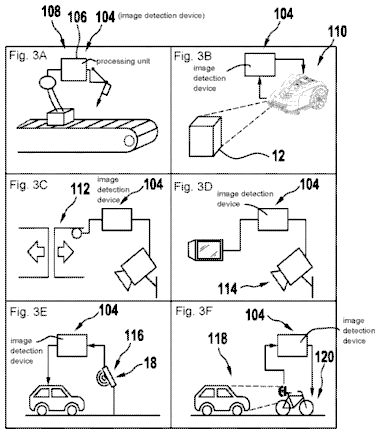
Published applications for new bicycle derailleur patents to the major component companies suggest that rear derailleurs could be headed the way of bottom brackets in terms of bike-specific compatibility. Rear derailleurs have mounted to frames with near-universal fit since they first evolved into the basic swinging parallelogram design in the 1950s. The days of universal-fit may be numbered though.
The ubiquitous system of a hanger extending downward from the right rear dropout, with a threaded hole, accommodates virtually all derailleurs. This standardized derailleur hanger was introduced by Campagnolo in 1951, when they made forged dropouts to fit their new Gran Sport derailleurs. Currently, such one piece dropouts and hangers are found primarily on older bikes and craft-made steel, with bolt-on replaceable hangers becoming standard over the last few decades. Derailleurs and hangers are easily bent if a bike falls on its side, so replaceable hangers have made related damage easy to repair. Hanger design has been the domain of frame and bicycle companies, rather than component manufacturers – with the result being a countless number of different hangers.
SRAM took the holeshot for change, with new bicycle derailleur patents, with the introduction of their universal derailleur hanger (UDH) in 2019. A UDH requires a specific dropout configuration and thru-axle, while allowing any conventional derailleur to bolt-on as usual. The system has been widely adopted, with SRAM’s website showing more than 40 bicycle companies now using UDH, including big players Trek, Specialized, and Giant. SRAM’s new T-type system, as part of their recently-released Eagle drivetrain, takes the idea further. Herein, Eagle T-Type rear derailleurs integrate a hanger into the derailleur itself, with no UDH. The top portion of the derailleur sandwiches the dropout, where a UDH would otherwise mount.
The T-type system is where things may start to get trickier from an intellectual property perspective – and therefore, competing products as well. SRAM has pursued patent coverage for a design that appears to be similar to the UDH, with one German application filed in April of 2018, and subsequent filings in the US and elsewhere. Industry sources say that SRAM has made UDH as an open standard, allowing manufacturers to incorporate the dropout configuration into frames at no cost. What could be more significant: in June of 2022, SRAM filed a US patent application showing a rear derailleur that uses the T-Type mounting system. If that patent issues, and depending on the scope of its claims, it could prevent Shimano and others from offering derailleurs that mount directly to the increasingly-popular UDH dropouts.
Shimano, the king of patents in the bicycle industry, is of course pursuing its own inventions and related intellectual property for new bicycle derailleur patents. A Shimano patent application filed in Dec 2021 shows a similar design to SRAM’s T-Type system, with a derailleur that has an integrated hanger. It mounts to directly to a dropout, with a similar sandwiching design as SRAM’s. As yet, no Shimano derailleurs using this design have been released.
Meanwhile, the newcomer to derailleurs is Tektro, under their TRP brand. Being so new, they have yet to make an impact in the drivetrain market. But they’re planning ahead with new bicycle derailleur patents, and already have their own approach to hanger-less derailleur mounting. One Tektro patent application shows six different versions of an adaptor that attaches to a dropout using various means such as screws, tabs, splines, etc. The derailleur then attaches to that adaptor with a threaded fastener. It’s likely that Tektro only intends to produce one of the styles of adaptors, but for patenting purposes shows multiple embodiments. Tektro’s design doesn’t sandwich the dropout as shown in SRAM and Shimano patent applications, but rather is positioned only on the outside of the dropout.
Tektro showed their new EVO7 and EVO12 cable-actuated derailleurs and drivetrains at the March, 2023 Taiwan bicycle show. Those derailleurs mount to a traditional hanger. However, patent applications indicate that Tektro is pursuing electronic shifting, so perhaps it’s those yet-to-be-released designs that incorporate their hangerless system.
Entirely uncertain is what patents will actually issue, and how broad any resulting claims may be. That will effectively determine how much ability one company has to prevent others from making similar designs. Shimano files patents for many designs that they don’t end up producing. In the chess game of product compatibility and patents, Shimano could very well have no plans to produce a hangerless derailleur and intends to keep their derailleurs mounted as they always have, hoping that SRAM is headed down a dead-end road with their T-Type system.
What does this mean for derailleurs in the future? Hangerless derailleurs may provide some advantages in terms of strength, stiffness, and precise placement of the pulley wheels relative to the cogset. But compatibility complications seem likely. Already, SRAM T-Type derailleurs will only work with frames that use a UDH dropout. Shimano also has its existing direct-mount system, which has been around since 2012 – but that largely has avoided compatibility problems. And all of the hanger-less systems only work with thru-axles, which need to be of a particular thread pitch and diameter.
For comparison, while bottom brackets never adhered to a single thread or size standard, English threading (“BSA”) was the dominate system for decades, with others threads such as Italian, French, Swiss, making some appearances – alongside US Ashtabula styles. But now, there’s a dizzying array of bottom bracket types, some specific to a single OE bicycle company – causing headaches for retailers and mechanics, as they struggle keep track of the ever-changing systems and stock compatible replacement parts. Front derailleurs, meanwhile, have their own matrix of clamp sizes, braze-on mounts, top-pull, bottom-pull, etc.
Rear derailleurs have mostly avoided such frame compatibility issues, with mountings remaining simple. But as component companies jockey for exclusivity and make patent claims, the days of universal-fit derailleurs are likely coming to an end.
This article first appeared in Bicycle Retailer and Industry News, print and website



